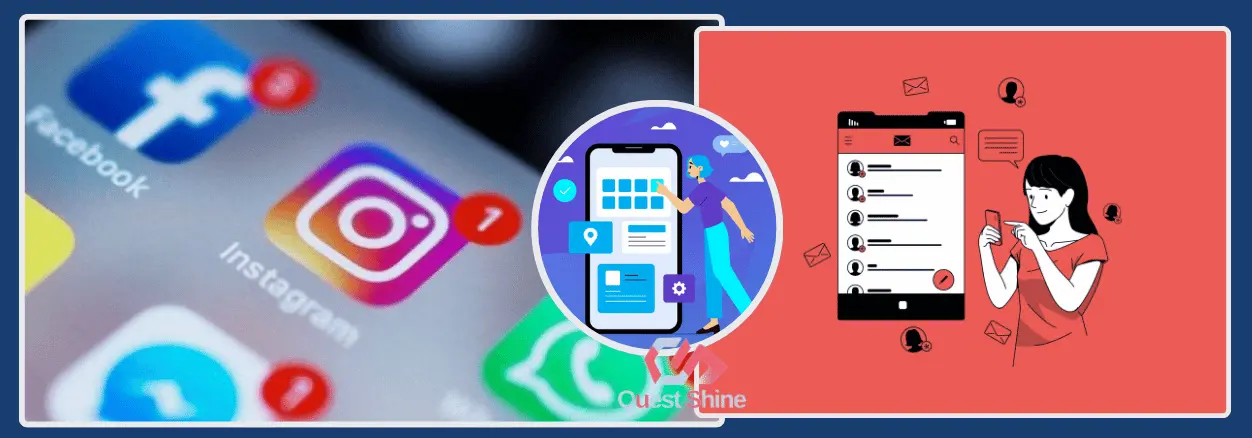The facilities that technology provides for our various activities has fostered investments in application development process. After all, they provide us access to several features with just some clicks. Among the categories of apps, those linked to communication have strength, since social networks are within the total of downloads in app stores worldwide . Whatsapp, as an example, never left the primary rank of the foremost downloaded app throughout 2019, in keeping with reports from Sensor Tower.
1- Structuring the thought
Having an application idea is probably the best a part of all development, but structuring it’s not that easy. After all, the thought still says little about the app, as imagining it as an answer for urban mobility or telemedicine doesn’t answer many questions such as:
- What will the app solve?
- What are its features?
- And your main screens?
- What will the visual identity be? Or will the developer have it off too?
- What about business rules?
- How will you stand out from the competition?
Others.
In short, the structuring of the thought is that the definition of the minimum requirements that your application must need to reach the ultimate objective.
2- Choosing collaborators
Despite being interdisciplinary beings, it’s impossible for us to master all areas of data. Therefore, attracting collaborators is an important step for the event of an application, because it requires plenty of experience and you’ll not consider all the mandatory ones. After all, that is what this text is for and why you’re here, correct?
In addition to the knowledge and skill variable, there are other factors that may hinder the assembly of the app, moreover because the lack of your time, software or equipment. That’s why application development process outsourcing is that the best resolution at these times.
You can prefer to choose an application company or hire freelancers. every one will present its benefits and harms, varying from execution time to cost, being the fastest companies and therefore the cheapest freelancers. For this, attempt to make different budgets and minimally know the history of that organization or professional, because it is going to be a giant decision factor. Research which projects were developed there and review user ratings within the app stores.
Also ensure that you simply are entitled to a confidentiality agreement , as this can be the sole thanks to guarantee that your idea are going to be shielded from damages or copies.
3- Trading the appliance
After finding the partner company or professional, it is time to barter. the primary step is that the signing of a service provision contract, which can define the terms, prices, payments, limits for changes and therefore the division of responsibilities between the contracted party and also the contracting party. this is often one among the foremost important parts for developing an app, as what’s decided during this contract will serve until the tip of your app’s production, thus avoiding communication frictions.
As already mentioned, there is also some changes along the way and, thus, there could also be some extra expenses or changes to the contract. However, there are some sorts of service contracts that have flexibility to alter.
4- Application development process
With the contracts agreed and scope defined, the time for development has arrived, which production time will vary per the complexity of the appliance, features, integration and API construction, among other factors.
At this time it’s important that you just have active participation. Remember the division of responsibility there when signing the contract? Your duties will revolve around communication. That is, because you’re the foremost intimate your app’s theme, your support are going to be essential to share the data and make sure that the top result’s the most effective.
Each developer will adopt a distinct method like Scrum. It provides for the partial delivery of the appliance, which should occur every fortnight. Thus, your presence are going to be essential to guage and approve what’s being developed and supply feedback.
Once the applying development is finished, the testing stage with real users begins. That is, those that don’t seem to be involved in development, evaluating usability and skill with the appliance. If there’s any point of improvement or critical changes, the app will return to the table for correction and improvement.
Now just sign the approval document and therefore the application are ready for the last step.
5- Application launch
With the finished app in hand, it is time to launch it within the Play Store and App Store app stores. For this you wish to make your account in each store for the publication. During this process, the developer also will participate within the submission of the app in stores.
In stores you’ll encounter some fields to fill. These are:
- horizontal banner
- vertical banners
- Icon
- Name
- Key words
- Short description of the app
- Long description of the app
- Price (depending on the sort of monetization )
Publishing from the App Store still requires another data such as:
- Application version
- Developer’s Copyright
Both the App Store and Play Store may require documents proving the identity of the app publisher. This process ensures that the publisher is alert to the applying and to avoid fraud and copyright issues. Stores also require an app approval period before actually making it available within the catalog.






?? ?????? ????? ?? ??????? ????? ???????? ?????????? ? ??????? ????????? ? ??????? ?????. ?? ????? ??????? ????? ? ??????? ????????????, ??????????? ???????? ? ??????? ?????????.
http://mariuspeters.de/2017/07/17/verdanke-meine-karriere-solchen-impulsen/
?? ???? ????? ?? ??????? ????? ???????? ?????????? ? ??????? ????????? ? ????? ??????????? ????????. ????? ????? ???????????? ??????? ????????????, ?????????? ???????? ? ??????? ?????????.
http://nevernotmaking.com/2020/06/15/masks/